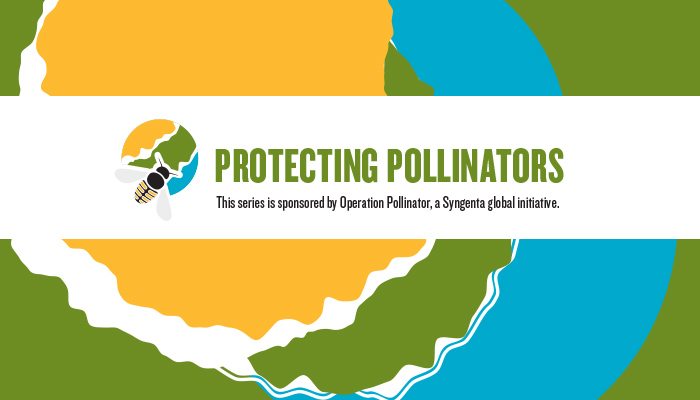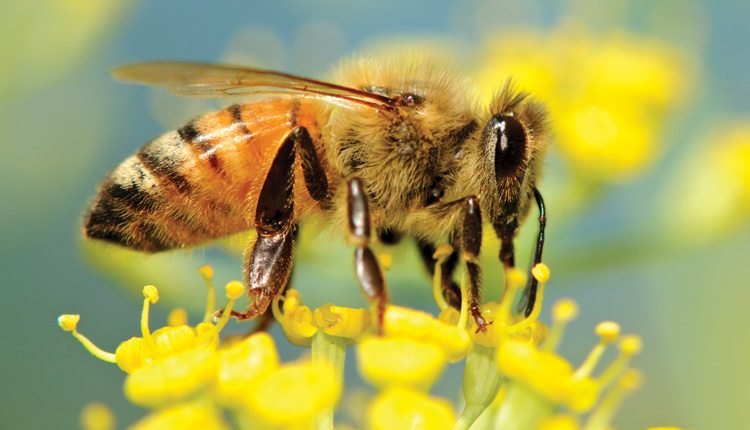Efforts pay off with long- and short-term benefits.
With input costs up and crop prices down, many family farms have turned to a monoculture cropping system in an attempt to improve efficiencies and make ends meet. However, these practices not only limit a piece of land’s long-term productivity potential, but also impact pollinators in a pretty significant way.
Jill Wheeler is head of sustainable productivity for Syngenta in North America. She is passionate about the six commitments Syngenta has targeted as part of its Good Growth Plan, which include input efficiency, farmland revitalization and biodiversity, among others.
When it comes to biodiversity benefits, Wheeler said there are three main areas to consider.
“First of all, biodiversity can improve pollination, which we know is critical for food production. It affects some crops more than others, but is still an important consideration,” Wheeler said.
Biodiversity also facilitates nutrient cycling and pest control, which provides farmers the foundation for better land productivity.
Wheeler also said Syngenta is working to increase genetic diversity through its plant breeding program by giving farmers a wider variety of genetic options within each crop family.
“We’re working on creating biodiversity by encouraging farmers to plant multi-functional field margins and buffer strips for pollinator and wildlife habitat. Equally important, we’re encouraging them to enhance the genetic diversity of their fields as a genetically diverse cropping system has more resilience to disease, pests and other environmental factors,” Wheeler said.
Return on Investment
For many of these efforts, the biodiversity benefits are not instantaneous.
“It’s not immediate. In fact, it’s a multi-year process. It could be several years before farmers see the full return on their investment, but there will be a payoff eventually,” Wheeler said.
Rod Snyder is president of Field to Market: The Alliance for Sustainable Agriculture, which looks at eight sustainability indicators, including biodiversity, and provides measurement tools and resources for growers and the supply chain that track opportunities for continuous improvement at the farm level.
“We’re looking at ways farmers can enhance that biodiversity, whether it’s installing buffer strips, using crop rotation or maintaining pollinator-friendly plants,” Snyder said.
Snyder agrees it’s a challenging topic because these efforts can seem, on the surface, to be at odds with what farmers are trying to achieve, such as weed control. It’s also challenging because the effects aren’t always measurable right away.
“Whether building soil health through crop rotation and cover crops or other management techniques, there will be additional benefits that are only realized over time,” Snyder said.
Habitat Creation
However, one area that does provide a faster return on investment is habitat creation.
Changing agricultural practices have altered rural landscapes and natural habitats for many of the pollinators we need. Pete Berthelsen, director of habitat partnerships for Pheasants Forever, works to help create and restore high-quality wildlife habitats, and farmers often receive incentives and rebates as an immediate benefit.
Berthelsen said that these efforts directly impact pollinator habitats as well.
“The connection is really simple. The critical habitat needs for bees and butterflies are the same exact needs we see for birds and other small wildlife,” Berthelsen said. There are many options that require various levels of commitment. Longer contracts that lock portions of underperforming land into habitat use for several years while providing a financial incentive appeal to some farmers. Others prefer to commit to only one or two years at a time.
One program, the Honey Bee and Monarch Butterfly Partnership, which is supported in part by Syngenta and other companies, offers farmers three- to six-year contracts to put land into habitat in exchange for an annual rental payment, a planting incentive and free seed.
“We’re working with the agricultural industry to find ways to build wildlife conservation into their operations. We want to work with farmers, not against them, so we help identify the best areas of their land to reinvest into habitat,” Berthelsen said.
In addition to the short-term financial benefits for farmers, habitat creation also provides pretty fast results for the pollinators. It doesn’t take years to grow flowers for forage.
“It’s a simple process. If a farmer is interested in the Honey Bee and Monarch Butterfly Partnership, for instance, they’ll receive a packet of information and an application. They’ll receive the seeds, shipped to their door and it’s a one-time planting that will grow into a functioning habitat,” Berthelsen said.
There’s not a one-size-fits-all approach, but together, we’re building a narrative about how we can better our land for the future.”
— Rod Snyder
Taking Action
Wheeler said the first step to building biodiversity is to study yield maps to identify areas of the operation that aren’t as productive.
“On average, about five percent of a farmer’s land is only marginally useful for crop production. Our goal is to find those areas and convert them to habitats such as buffer strips while increasing production on the remaining 95 percent,” she said.
Field corners are one good place to start, especially when center-pivot irrigation systems are used.
“We also look at soil type and land topography,” Berthelsen said.
The next step is to look at tweaking production methods.
When taking land out of production for habitat creation, something must be done to increase productivity of the remaining land.
“If we have fewer acres being used for farming, we need to be careful with those areas, which goes back to reducing crop failure risks by investing in genetic diversity, and ensuring good soil health,” Wheeler said.
Field to Market has developed a Fieldprint Calculator tool for corn, cotton, rice, wheat, potatoes and soybeans to graphically represent the farmer’s unique operation and help them assess efficiencies and environmental impacts. Farmers can also compare their performance against averages.
Another good starting point for adding back biodiversity is to consider the positive benefits cover crops provide.
“We tended to move away from cover crops when we developed the ability to do deep tillage with machinery. But that technology isn’t always the best tool for the job and we’ve found with recent research that bringing back some of those older practices can help with soil structures and nutrient management,” Wheeler said.
Small changes can also make a difference.
“I spoke with a farmer who said, for him, it was as simple as just not removing all the milkweed from his land. Before, it was something he would eradicate each year. Now, he leaves some where he can, just because he knows it’s valuable for pollinators,” Snyder said.
In some cases, that education and awareness is the first, most important step.
“We’re helping farmers think about how their choices have a real impact on biodiversity. There’s not a one-size-fits-all approach, but together, we’re building a narrative about how we can better our land for the future,” Snyder said.












